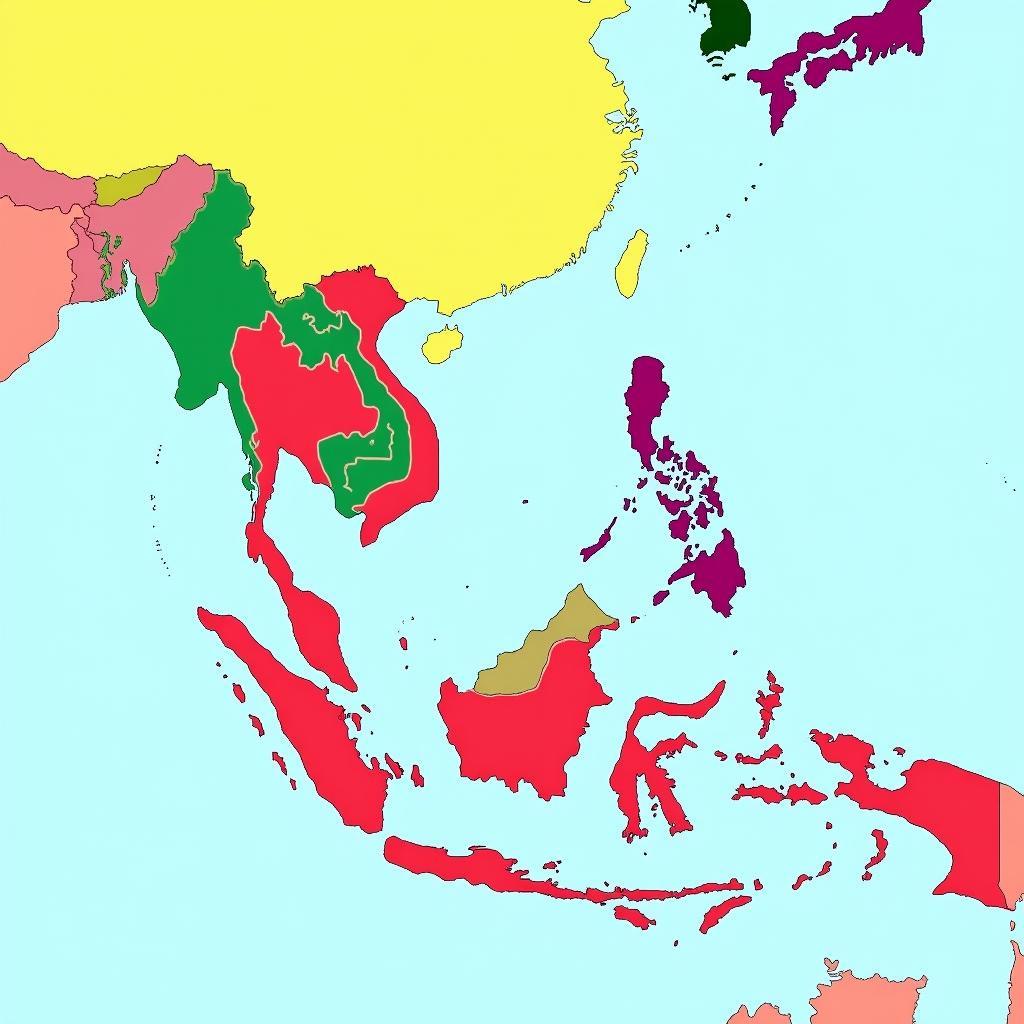The Association of Southeast Asian Nations, commonly known as ASEAN, is a political and economic union of 10 member states in Southeast Asia. Established in 1967, the Asean Bloc Members have sought to accelerate economic growth, social progress, and cultural development in the region through collaborative efforts.
What Countries Are in ASEAN?
The ASEAN bloc comprises ten diverse nations:
- Brunei Darussalam: A small but wealthy nation known for its oil and gas reserves.
- Cambodia: Home to the magnificent Angkor Wat temple complex and a rapidly developing economy.
- Indonesia: The world’s largest archipelago, boasting a rich cultural heritage and significant economic potential.
- Laos: A landlocked country known for its mountainous terrain and traditional way of life.
- Malaysia: A vibrant country with a diverse population and a thriving economy driven by manufacturing and tourism.
- Myanmar: A nation undergoing significant political and economic transition, rich in natural resources and cultural heritage.
- Philippines: An archipelago known for its beautiful beaches, friendly people, and growing business process outsourcing industry.
- Singapore: A global financial hub and technological powerhouse, renowned for its efficiency and modern infrastructure.
- Thailand: A popular tourist destination famous for its beaches, temples, and delicious cuisine.
- Vietnam: A rapidly developing nation with a rich history and a dynamic economy.
 Cultural Diversity within ASEAN
Cultural Diversity within ASEAN
Why Was ASEAN Formed?
The ASEAN bloc was formed in the wake of the Cold War and regional instability, with the primary aim of fostering peace and cooperation among its members. The founding fathers envisioned a Southeast Asia free from conflict and dedicated to economic and social progress.
The ASEAN benefits are numerous and far-reaching.
Pillars of the ASEAN Community
The ASEAN Community is built upon three pillars:
1. Political-Security Community: Aims to promote peace, security, and stability in the region through dialogue, confidence-building measures, and conflict resolution mechanisms.
2. Economic Community: Works towards regional economic integration, trade liberalization, and the creation of a single market and production base.
3. Socio-Cultural Community: Focuses on promoting human development, social welfare, and cultural exchange among member states.
ASEAN’s Role in the Global Arena
Since its inception, ASEAN has evolved into a significant player in the global arena. The bloc has established dialogue partnerships with major world powers and actively participates in international forums.
“ASEAN’s strategic location and economic dynamism make it a key player in shaping the future of the Indo-Pacific region,” says Dr. Lina Wong, a leading expert on Southeast Asian geopolitics.
Challenges Faced by ASEAN
Despite its achievements, ASEAN faces several challenges:
- Economic disparities: Wide development gaps exist between member states, posing challenges for regional integration.
- Territorial disputes: Overlapping maritime claims in the South China Sea continue to fuel tensions.
- Political instability: Some member states experience internal political challenges that threaten regional stability.
- Non-interference principle: ASEAN’s commitment to non-interference in the internal affairs of member states can hinder its ability to address human rights concerns and democratic backsliding.
The Future of ASEAN
ASEAN faces a dynamic and increasingly complex geopolitical landscape. The bloc’s ability to adapt, innovate, and deepen regional integration will be crucial in determining its future success.
“The next chapter of ASEAN’s journey will require even greater commitment to unity and a shared vision for a prosperous and peaceful Southeast Asia,” concludes Dr. Wong.
FAQs
1. What is the main goal of ASEAN?
The main goal of ASEAN is to promote peace, stability, and economic prosperity in Southeast Asia.
2. When was ASEAN established?
ASEAN was established on August 8, 1967.
3. How many countries are in ASEAN?
There are 10 member states in ASEAN.
4. What are the three pillars of the ASEAN Community?
The three pillars are the Political-Security Community, the Economic Community, and the Socio-Cultural Community.
5. What is ASEAN’s role in the South China Sea dispute?
ASEAN seeks to facilitate dialogue and peaceful resolution to the South China Sea dispute among claimant states.
Need Help? Contact Us!
For any inquiries or assistance regarding ASEAN, please contact us:
Phone Number: 0369020373
Email: aseanmediadirectory@gmail.com
Address: Thôn Ngọc Liễn, Hiệp Hòa, Bắc Giang, Vietnam
Our dedicated customer support team is available 24/7 to assist you.

